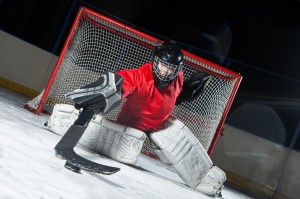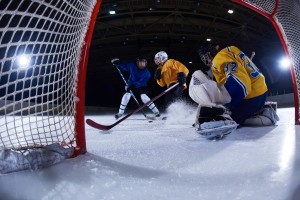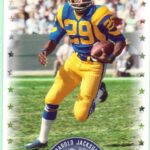Goaltender Tips From Pro Stock Hockey
 Being a goaltender is a difficult task. You are who people will be pointing to when the game gets out of hand, but also when the game is saved. Pro Stock Hockey outlined some important tips featured in their goalie e-book. Here’s just some of what you’ll find in this e-book:
Being a goaltender is a difficult task. You are who people will be pointing to when the game gets out of hand, but also when the game is saved. Pro Stock Hockey outlined some important tips featured in their goalie e-book. Here’s just some of what you’ll find in this e-book:
Wraparounds
Timing
The most difficult part of facing a wrap around is timing. Timing of when to drop down to the ice, timing the arrival to the post when tracking the puck below the goal line, timing of when to cut off passes or be more aggressive with the stick, etc. Timing is not only relative to what is going on with the puck below the goal line, but it is also directly linked to what is occurring above the goal line. Therefore, there’s a lot to consider for goaltenders. But how does timing affect our overall ability to stop and control the flow of the game?
Control
Ensuring that goalies are capable of controlling the flow of the game is essential so that they are keeping up with the speed of the puck even when it’s below the goal line. Neutralizing passing zones which cause goaltenders to move cross-crease help in this area so that they are limiting the amount of movement and lower the risk of falling behind in their positioning.
Equipment Tips For Beginners
Becoming a goaltender requires commitment not only from the athlete itself, but also from parents. For parents, it’s a major financial commitment. Goalie equipment is expensive, but safety and proper fit should be first concerns when it comes to the equipment. Nowadays, some associations provide goalie equipment for free, but it isn’t necessarily always the best option. If the equipment the association is offering is more than 5 years old and/or doesn’t fit properly, look for used equipment from your local sports store. Too often young goalies new to the position wear equipment that isn’t allowing them to enjoy goaltending because it is either too big and bulky or too small and worn out.
Equipment that is too big and bulky does not allow a goalie to be mobile and move efficiently. On the other hand, equipment that is too small and/or worn out is a safety risk and may result with an injury. Goalies might also get scared of the puck and start ducking, which is a very bad habit and hard to change. Goalies should talk to a goalie coach before purchasing any equipment to make sure they get gear that will allow them to be as effective as possible.
Nearly two dozen have contributed to the goalie e-book, providing wisdom on everything from the tips you see above to pieces for more advanced netminders.
The e-book features tips, advice, philosophies, personal stories, history lessons and more — all shared by some of the sharpest goaltending minds in the game. The collection is designed to help you enhance your game; to educate, inform and entertain you until it’s time to take the ice again and make your next save.






 Logging you in...
Logging you in... Loading IntenseDebate Comments...
Loading IntenseDebate Comments...







Sofosbuvir · 392 weeks ago
Sofosbuvir Tablets